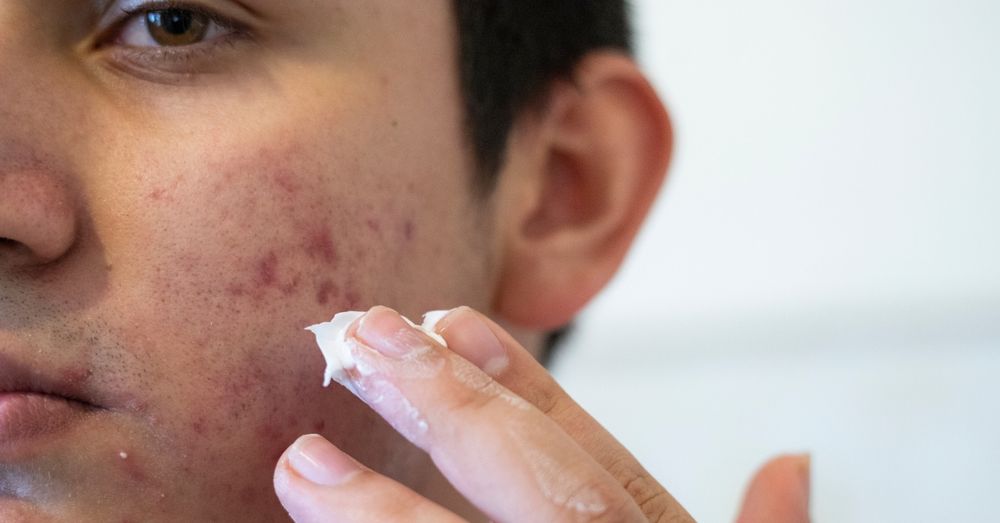Acne and Acne Scars Treatment: Change Your Skin with Proven Solutions
Acne and Acne Scars Treatment: Change Your Skin with Proven Solutions
Blog Article
Comprehending the Different Skin Problem and Effective Treatment Choices for Acne Marks
Acne marks represent a complicated interplay of skin problem that significantly effect individuals' self-worth and overall skin wellness. Understanding the unique kinds of acne scars-- atrophic and hypertrophic-- together with their underlying causes, is critical for determining reliable treatment approaches. Various healing choices exist, varying from advanced skin-related treatments to natural treatments. The efficiency of these therapies frequently hinges on individualized assessments by qualified specialists. As we explore the landscape of acne scar monitoring, it becomes obvious that the trip toward clearer skin might entail more than just topical remedies.
Kinds of Acne Marks
The two main groups of acne marks are atrophic and hypertrophic scars. These scars are more categorized into 3 subtypes: ice pick scars, which are deep and slim; boxcar scars, which are broader and have well-defined edges; and rolling marks, which create a wave-like appearance due to uneven skin structure.
In contrast, hypertrophic scars result from an overproduction of collagen during the recovery process, leading to raised areas on the skin. These marks are typically solid and can differ in shade, in some cases showing up red or darker than the surrounding skin.

Reasons For Acne Scarring
Scarring occurs as an outcome of the body's all-natural recovery response to swelling and injury triggered by acne sores. When acne forms, it sets off an inflammatory action, leading to the launch of numerous cytokines and growth aspects that promote recovery. This procedure can in some cases lead to extreme cells formation or insufficient repair service, resulting in scars.
The main reasons for acne scarring consist of the intensity of the acne itself, duration of the sores, and private skin types. Serious inflammatory acne, such as nodules and cysts, is most likely to lead to scarring due to much deeper tissue damages. In addition, improper handling of acne sores, such as choosing or pressing, can aggravate cells injury and inflammation, increasing the probability of scarring.
Genetic predisposition likewise plays a considerable duty; people with a family background of scarring are at a higher risk. Skin type and shade can influence mark development, as darker skin tones might experience post-inflammatory hyperpigmentation, while lighter skin might develop atrophic marks.

Treatment Alternatives for Scarring
Reliable therapy alternatives for acne scarring differ depending on the type and severity of the scars. Typically classified into atrophic, hypertrophic, and keloid scars, these conditions require customized approaches for optimal outcomes.
For atrophic marks, which are identified by a loss of tissue, treatments such as chemical peels, microdermabrasion, and laser treatment are commonly employed. These methods advertise skin renewal and promote collagen production, thus boosting skin texture. Subcision, a minimally invasive treatment, can also work by separating coarse bands below the skin.
Hypertrophic and keloid scars can be extra testing to treat. Options consist of corticosteroid shots to reduce swelling and squash the scars. acne and acne scars treatment. In many cases, cryotherapy or laser treatment may be suggested to minimize their appearance
Surgical options are readily available for severe scarring, where excision or skin grafting might be necessary. It's essential for people to speak with a skin specialist to examine their particular mark type and review the most appropriate treatment strategy. Incorporating multiple therapies typically yields the finest results, ensuring that each patient's distinct skin problem is resolved effectively.
Natural Remedy and All-natural Solutions
All-natural remedies and natural remedy can give an accessible method for people looking for to improve the look of acne marks. Various components found in the home cooking area have shown potential advantages in boosting skin structure and promoting recovery.
Applying fresh aloe vera gel straight onto the marks can help enhance skin hydration and reduce redness. Honey possesses natural antibacterial and moisturizing high qualities that can help in mark recovery.
One more efficient choice is lemon juice, which functions as an all-natural exfoliant and can lighten hyperpigmentation. Nevertheless, it ought to be used carefully, as it may cause photosensitivity. Oatmeal masks are likewise useful; their gentle peeling can help get rid of dead skin cells while relaxing irritation.
Crucial oils, such as tea tree oil and lavender oil, can better support scar healing as a result of their antimicrobial homes. It is critical to carry out a spot examination before using any type of treatment to make sure there are no unfavorable responses. These natural services Get More Information can be a corresponding strategy in the trip to decrease acne marks.
Stopping Future Scarring
Taking on a positive strategy to skincare can substantially reduce the threat of creating future acne marks. Among the crucial techniques is to manage acne properly as it arises (skin rejuvenation treatments). This entails using non-comedogenic skincare items and medicines prescribed by skin specialists that target acne without aggravating the skin. Routine cleaning, exfoliation, and hydration can help maintain skin health and wellness and protect against clogged pores.
Additionally, avoiding the lure to press or select acne lesions is essential, as this can result in swelling and succeeding scarring. Instead, individuals must focus on using topical treatments that promote recovery and minimize inflammation. Active ingredients such as salicylic acid, benzoyl peroxide, and retinoids are recognized for their efficacy in managing acne and decreasing scars.

Last but not least, preserving a healthy diet rich in anti-oxidants and remaining moisturized supports skin regeneration. By carrying out these safety nets, individuals can considerably reduce their threat of future scarring and promote general skin health.
Conclusion
In conclusion, an extensive understanding of acne marks, incorporating both hypertrophic and atrophic kinds, is vital for reliable treatment techniques. Assessment with a skin doctor remains vital to devise tailored methods that take into consideration individual skin types and scar extent, inevitably improving the efficacy of mark management methods.
Acne scars stand for a complicated interplay of skin problems that dramatically impact individuals' self-worth and total skin health and wellness. The 2 key categories of acne marks are hypertrophic and atrophic marks. These scars are more categorized into three subtypes: ice pick marks, which are slim and deep; boxcar marks, which are wider and have well-defined edges; and rolling scars, which develop a wave-like look due to uneven skin texture.
A comprehensive consultation with a skin specialist can help determine the most ideal intervention, taking into account Visit Website the individual's skin type, mark extent, useful reference and total skin health.
Assessment with a skin doctor remains crucial to create personalized strategies that think about private skin kinds and scar extent, inevitably enhancing the efficacy of mark monitoring techniques.
Report this page